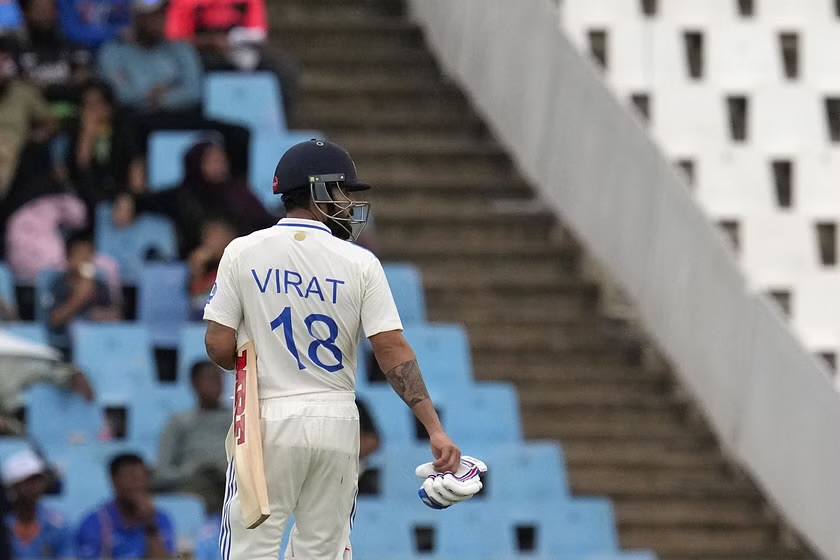India faced a disheartening defeat in the initial Test against South Africa, where the hosts convincingly beat them by an innings and 32 runs in Centurion. This victory enabled the Proteas to maintain their undefeated record in the Test series against India on home soil.
Despite the significant loss, India didn’t have many highlights in their first defeat of the current World Test Championship cycle. However, Virat Kohli stood out as a positive.
The star batsman fought a solitary battle in the team’s subdued second-inning batting performance. Additionally, he seemed poised for a substantial contribution in the first inning but fell victim to an exceptional delivery from Kagiso Rabada.
Among his 189 Test innings, Virat Kohli has predominantly batted at No. 4 in 143 of them. His appearances at No. 3 are limited to just six times, with a modest average of 19.4 in that position. However, the current circumstances suggest that the 35-year-old might need to shift up one spot to meet the team’s requirements.
Here are three reasons for Virat Kohli’s batting at No. 3 in the second Test against South Africa is important:
#1 The senior players need to take charge in the absence of Pujara and Rahane
India is presently undergoing a period of change in Test cricket, particularly in the batting unit. Cheteshwar Pujara and Ajinkya Rahane, integral components of the batting lineup for the past decade, are no longer part of the team. Due to their consistently subpar performances, the duo appears to have been gradually phased out.
With his former teammates absent, Kohli stands as the sole survivor in the middle order and must elevate his performance. Batting at No. 3 presents a potentially greater challenge than No. 4, yet the former captain is recognized as a resilient fighter who confronts challenges directly.
Batting at No. 3 is often considered a tougher task, although this may not consistently apply in South Africa, where lateral movement persists throughout the innings. However, the new ball tends to generate more movement in the air. If a wicket falls early, Kohli might face challenging conditions. However, this should not be a concern.
#2 Virat Kohli has appeared to be among the finest when facing seam and swing bowling
Except for a recurring inclination to play expansive drives with an extended reach, Virat Kohli stands out as one of the top players against seam and swing in the present Indian team.
The accomplished batsman is adept at handling fast bowling; his key to success lies in restraining the impulse to play at wide deliveries. Virat Kohli boasts an impressive Test batting average of 52.06 in South Africa, arguably unparalleled by any overseas batsman in the Rainbow Nation.
Additionally, he holds an average of 54.08 in Australia, and a prolific series in 2018 elevated his average in England to 33.21. Kohli is good enough and has the right mindset to perform well at No. 3. More importantly…
#3 It would enable Shubman Gill to bat in a more suitable position
Shubman Gill has assumed the No. 3 position following Pujara’s absence, but the young batsman is still refining his skills. Despite being one of the top ODI batsmen globally, he faces challenges against swing and seam in Test cricket.
Kohli’s versatile skills make him a suitable choice for No. 3, freeing up Gill to be placed in a more favourable position, perhaps at No. 4 or No. 5. The decision would depend on India’s strategy for utilizing Gill and Shreyas Iyer, who faced challenges in the initial Test.
Gill is considered a lasting choice for India’s middle-order, and it’s overdue to shift him to a more comfortable position.
Get the latest cricket news here, like us on Facebook, and follow us on Twitter and Instagram for more such updates.

